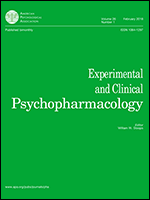
“Chronic pain states have resulted in an overreliance on opioid pain relievers, which can carry significant risks when used long term. As such, alternative pain treatments are increasingly desired.
Although emerging research suggests that cannabinoids have therapeutic potential regarding pain, results from studies across pain populations have been inconsistent. To provide meta-analytic clarification regarding cannabis’s impact on subjective pain, we identified studies that assessed drug-induced pain modulations under cannabinoid and corresponding placebo conditions.
Results revealed that cannabinoid administration produced a medium-to-large effect across included studies, Cohen’s d = -0.58, 95% confidence interval (CI) [-0.74, -0.43], while placebo administration produced a small-to-medium effect, Cohen’s d = -0.39, 95% CI [-0.52, -0.26]. Meta-regression revealed that cannabinoids, β = -0.43, 95% CI [-0.62, -0.24], p < .05, synthetic cannabinoids, β = -0.39, 95% CI [-0.65, -0.14], p < .05, and sample size, β = 0.01, 95% CI [0.00, 0.01], p < .05, were associated with marked pain reduction.
These outcomes suggest that cannabinoid-based pharmacotherapies may serve as effective replacement/adjunctive options regarding pain, however, additional research is warranted.”
https://www.ncbi.nlm.nih.gov/pubmed/31120281
https://psycnet.apa.org/doiLanding?doi=10.1037%2Fpha0000281


 “Chronic pain may be treated by medical cannabis. Yet, there is scarce evidence to support the role of medical cannabis in the treatment of fibromyalgia. The aim of the study was to investigate the characteristics, safety, and effectiveness of medical cannabis therapy for fibromyalgia.
“Chronic pain may be treated by medical cannabis. Yet, there is scarce evidence to support the role of medical cannabis in the treatment of fibromyalgia. The aim of the study was to investigate the characteristics, safety, and effectiveness of medical cannabis therapy for fibromyalgia.






